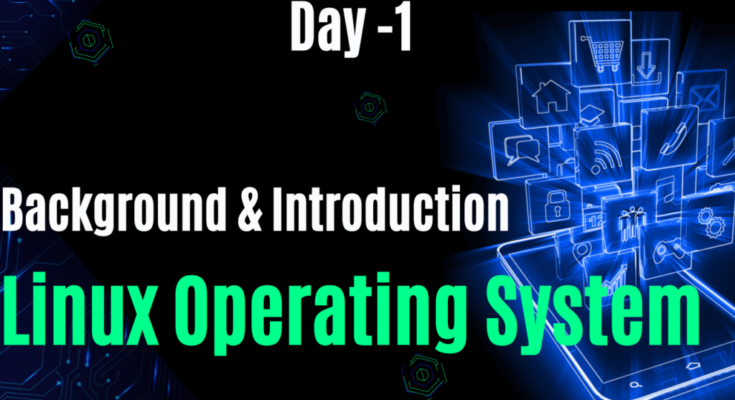Linux is an operating system (OS), like Windows or macOS. An OS is software that manages a computer’s hardware and software resources. It acts as a bridge between applications and hardware. Users control most applications.
But the OS starts and stops with the computer. Windows and macOS are proprietary systems. Lińux, on the other hand, is open-source. This means anyone can use, study, modify, and share its code. Proprietary software does not share its code, limiting user modifications. Lińux’s mascot is a penguin named TUX, short for Torvalds UNIX. We tale a simple overview of Lińux in this blog. Keep reading.
Devices Running Linux
Many devices use Lińux, including phones, game consoles, laptops, and PCs. Web servers and supercomputers also run Lińux. Specialized devices like routers use Linux as well.
Linux History
The modern computer era began in the 1960s. Computers started having a mouse and a graphical user interface (GUI). Unix was first released by Bell Labs in the 1970s. Written in C, it became portable and led to many versions. Proprietary Unix versions emerged in the 1980s.
Richard Stallman launched the GNU Project in 1983. The goal was to create a Unix-like free software OS. GNU stands for GNU’s Not Unix. The project aimed to provide software that anyone could run, study, modify, and share.
Linus Torvalds developed a Unix kernel in 1991. Now known as the Lińux kernel, it is written in C and Assembly. Lińux has over 27 million lines of code. It is a registered trademark of Linus Torvalds.
Linux Distributions and Desktop Environments
A Linux distribution (distro) is an OS based on the Lińux kernel and a package management system. A typical distro includes the Lińux kernel, GNU components, tools, and libraries. It also includes a window system, a window manager, and a Desktop Environment (DE). So, the X Window System is the most common.

Most software in Lińux distros is free and open-source. Some distros may include proprietary binaries. There are nearly a thousand different Lińux distros. A DE provides a common graphical user interface (GUI). It includes toolbars, icons, menus, and widgets. Various DEs offer different user experiences. Some popular DEs are:
| EDs | User Experience |
|
Easy to use, the default for Linux Mint. |
|
Clean and modern, default for many distros. |
|
Highly customizable. |
|
Lightweight and fast, often used on netbooks. |
|
Intuitive, derived from GNOME2. |
|
Lightweight and user-friendly. |
Users can download Linux distros online. DistroWatch.com offers information and download links. Because there are both community-supported free distros and commercial options.
Special-Purpose Linux Distros
Linux distros also cater to specific purposes. OpenWRT is for routers. Raspberry Pi OS is for Raspberry Pi computers. Android is a Lińux-based OS for touchscreen devices.
Benefits of Linux
Here are various benefits of Lińux:
- Secure and Private
Lińux rarely needs antivirus programs. Its open nature ensures swift bug fixes. The large community keeps the system transparent.
- Free
Most Lińux distros are free. This offers high-quality software at no cost.
- Reliable and High-Performing
Linux provides a stable and efficient computing environment. It is used by major corporations and all 500 of the world’s fastest supercomputers.
- Good for Old Hardware
Lightweight distros can revive older computers. Distros like MX Lińux, Puppy Lińux, or Pop. OS is perfect for this.
- Easy to Install and Use
Modern Lińux installations are user-friendly and quick to set up. You can install a modern Lińux distro in less than 30 minutes.
Differences from Other Operating Systems
Linux is similar to other OSes. It offers a GUI and familiar software. However, it is open-source, allowing for extensive customization. Users can choose different software options and components. So, this level of customization sets Lińux apart from other operating systems.
Who Uses Linux?
Linux powers many internet servers, Android devices, and various electronics. So, Microsoft Windows includes Lińux components through the Windows Subsystem for Linux (WSL).
Ownership and Licensing
Linux is open-source, but the name Lińux is trademarked by Linus Torvalds. The source code is licensed under the GPLv2 license. The term Lińux technically refers to the Linux kernel. Most people refer to the entire OS as Lińux.
Unix vs. Linux
Unix, developed in the 1970s, influenced Lińux. Lińux was created to be Unix-compatible but free and open-source. Over the years, Lińux has surpassed Unix in popularity.
Getting Started with Linux
If you want to try Lińux, choose a popular distro like Elementary OS, Fedora, Mint, or Ubuntu. You can install it on your current computer or buy a pre-installed Linux machine. Lińux is accessible, customizable, and supported by a large community. It’s a great choice for users seeking an open-source alternative.



